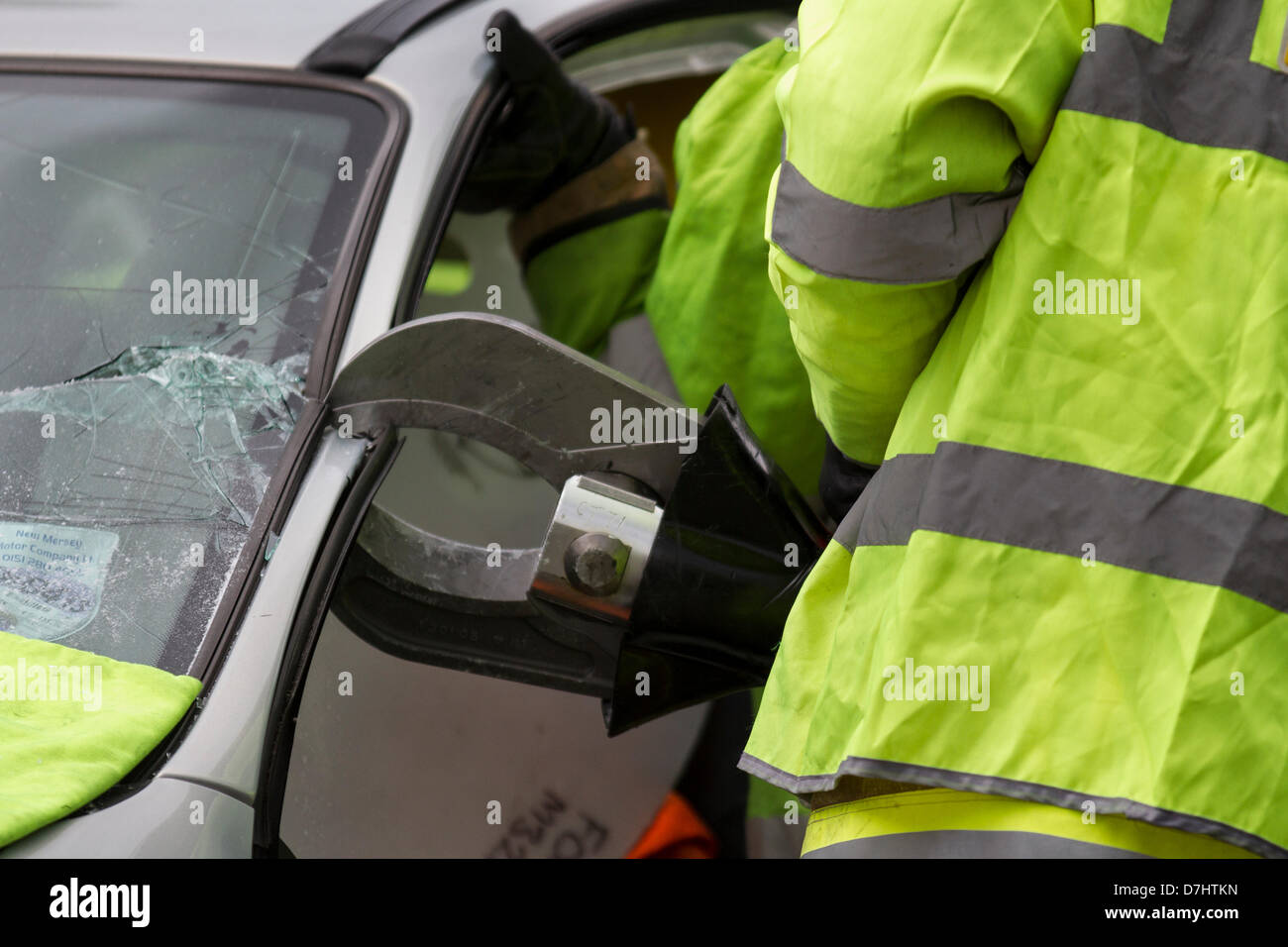Hydraulic Rescue Cutter being used on car pillar at the Accident Demonstration during National Road Safety Week carried out by Merseyside Fire & Rescue Service across the county to raise awareness of road safety. One of a series of events as part of the Chief Fire Officers Associations' (CFOA) support of the United Nations Decade of Action for Road Safety. Formby, Merseyside, UK

Image details
Contributor:
MediaWorldImages / Alamy Stock PhotoImage ID:
D7HTKNFile size:
24.7 MB (790.5 KB Compressed download)Releases:
Model - no | Property - noDo I need a release?Dimensions:
3600 x 2400 px | 30.5 x 20.3 cm | 12 x 8 inches | 300dpiDate taken:
8 May 2013Location:
Southport, Merseyside, UKMore information:
This image could have imperfections as it’s either historical or reportage.
Rescue Demonstrations carried out by Merseyside Fire & Rescue Service in Formby to raise awareness of road safety. Events to be held by MF&RS staff at locations across Merseyside as part of the Chief Fire Officers Associations (CFOA) support of the United Nations Decade of Action for Road Safety, National Road Safety Week. The events are especially aimed at pedestrians and are targeting young drivers urging them not to become distracted while driving. Hydraulic rescue tools are used by emergency rescue personnel to assist vehicle extrication of crash victims, as well as other rescues from small spaces. These tools include cutters, spreaders, door busters and rams. They are popularly referred to in the English speaking Commonwealth nations and the US as the Jaws of Life, a trademark of Hurst Performance, Inc. The Jaws of Life was first used in 1963 as a tool to free race car drivers from their vehicles after accidents.